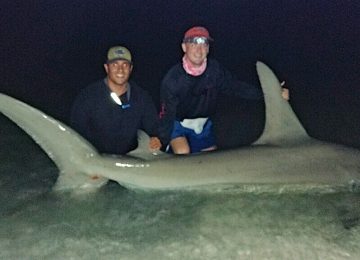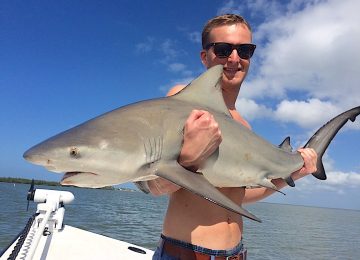Sanibel Fishing Charters, January 27, 2022: Redfish, Catch & Release!
Red Tide/Algae & Daily Salt Water Quality Update Here.
Blue-Green Algae & Daily Fresh Water Quality Update Here.
Captiva Fishing: Please Click For Rates & To Book A Captiva Fishing Charter Or Call 239-472-8658.



































Sanibel Island Fishing Charters, January 27, 2022
Please Click To Rent Homes Direct From Captiva Homeowners; No VRBO Booking Fees.

Vote Water For Florida’s Future!
January 27, 2022: Redfish, Catch & Release, Captain Joe’s Charters – the weather is great – no significant Red Tide presence, and a lot of good fish in the gulf, bay, and passes; Sharks, Redfish, Spanish Mackerel, Snook, and Seatrout are currently present.
Redfish & snook are regulated as catch & release at this time.
Already seeing some positive impact. Some very nice big redfish and big snook around. Trout are also coming back.
The Caloosahatchee freshwater releases are also not an issue right now, but still a huge long-term problem.
Extremely frustrating. We need wholesale changes in the Florida state government. It is not a Republican or Democrat issue – it is a Big Sugar control everyone issue. It is stunning how we continue to let the sugar industry and the agriculture north of Lake Okeechobee to damage the water and all of Florida.
Please click here to Book A Charter or call 239-472-8658.
We’re located in Castaways Marina, Santiva, Sanibel Island, just before the Blind Pass bridge to Captiva Island.


Sanibel Island Fishing Charters & Sanibel Island Fishing Charters: Redfish, September 12, Catch & Release. Please also visit the Sanibel, Fort Myers, Florida Fishing Report and Cuban Fishing sites.

Redfish are now catch & release only.
[File Photo: Sunday, October 15, 2017}.” width=”3659″ height=”2882″ />
Little Girl, Redfish, Catch & Release, Sanibel Fishing & Captiva Fishing, Sanibel Island, Saturday, March 24, 2018, [File Photo: Sunday, October 15, 2017}.
“The red drum (Sciaenops ocellatus), also known as channel bass, redfish, spot tail bass, or simply red, is a game fish found in the Atlantic Ocean from Massachusetts to Florida and in the Gulf of Mexico from Florida to northern Mexico.[1] It is the only species in the genus Sciaenops.

The red drum is related to the black drum (Pogonias cromis), and the two species are often found in close proximity to each other; they can interbreed and form a robust hybrid, and younger fish are often indistinguishable in flavor.[2]

Red drum are a dark red color on the back, which fades into white on the belly. The red drum has a characteristic eyespot near the tail and is somewhat streamlined. Three-year-old red drum typically weigh 6-8 lb. The largest red drum on record weighed just over 94 lb and was caught in 1984 on Hatteras Island. Red drum and black drum both make a croaking or drumming sound when distressed.
![Two Happy Fishermen, Two Redfish, Sanibel Fishing & Captiva Fishing, Sunday, October 1, 2017 [File Photo: Tuesday, 9-22-15].](https://i0.wp.com/www.captivafishing.net/wp-content/uploads/2015/09/Two-Redfish-9-22-151-e1442961242656.jpg?resize=980%2C1134)

The red drum uses its senses of sight and touch, and its downturned mouth, to locate forage on the bottom through vacuuming or biting. On the top and middle of the water column, it uses changes in the light that might look like food. In the summer and fall, adult red drum feed on crabs, shrimp, and mullet; in the spring and winter, adults primarily feed on menhaden, mullet, pinfish, sea robin, lizardfish, spot, Atlantic croaker, and mud minnows.

Red drum naturally occur along the southern Atlantic and Gulf of Mexico coasts of Louisiana, Texas, Alabama, Mississippi, and Florida. Aquaculture activities involving them occur around the world.[4] Immature red drum prefer grass marsh areas of bays and estuaries when available. Both younger mature red drum (3-6 years of age) and bull red drum prefer rocky outcroppings including jetties and manmade structures, such as oil rigs and bridge posts. Around this type of structure, they are found throughout the water column.” Please see more information here.

Red Drum: Sciaenops ocellatus
Florida Regulations: (Harvest in federal waters prohibited)
| Regulations | Northeast Zone | Northwest Zone | South Zone |
|---|---|---|---|
| Minimum Size Limit | Not less than 18″ no more than 27″ total length | ||
| Daily Bag Limit | 2 fish per person per day; 8 fish vessel limit | 1 per person per day; 8 fish vessel limit | 1 fish per person per day; 8 fish vessel limit |
| Remarks | Bag limits apply in areas adjacent to fishing sites such as docks and parking lots
6 fish per person transport limit applies when traveling in a vehicle on land away from a fishing site. Must remain in whole condition until landed ashore Commercial harvest prohibited |
||

Gear requirements:
- Legal Gear: hook and line, cast nets
- Illegal Gear: Spearing (includes spearfishing, gigging and bow fishing) and/or use of multiple hooks in conjunction with live or dead natural bait is prohibited

Red Drum Management Zones
- Northwest: Escambia through Fred Howard Park Causeway near Pasco County
- South: Fred Howard Park Causeway through Monroe County (west coast) and Miami-Dade through Volusia counties (east coast)
- Northeast: Flagler through Nassau counties

Habitat and Fishing Tips: Red drum, also called redfish, channel bass, spot tail, red bass or reds, are one of Florida’s most popular sportfish and the state’s most widespread estuarine fish.

Red drum are named after the “drumming” sound they make during spawning and when taken out of the water. The sound is produced by muscles rubbing against the inflated air bladder. Red drum inhabit the nearshore and offshore waters throughout the Gulf of Mexico and along the Atlantic coast from Massachusetts to Key West. Juvenile red drum inhabit rivers, bays, canals, tidal creeks, and passes in estuaries for up to four years, after which they usually move to nearshore or open ocean waters as adults.

Red drum in Florida can reach lengths of 45 inches and weigh up to 51 pounds. The world record red drum was caught off North Carolina waters in 1984 and it weighed 94 pounds, 2 ounces.The oldest recorded red drum in Florida was aged at 40 years. Floating a live shrimp under a popping cork is a good way to fish for red drum.

They also chase crabs, mullet, pinfish, and killifish (mud minnows). Casting soft-bodied jigs, spoons and even top-water plugs will catch the attention of these powerful estuarine musicians.


State Record:
52 lb 5 oz, caught near Cocoa (1996)
Please also visit:
Redfish Catch, Hold and Release Tournament Exemption Permit page

Red Drum Management
Management of red drum in Florida is considered a success story. In the late 1980s, red drum was overfished, thus several emergency closures were established to reduce fishing pressure. In 1989, the slot limit of 18-27 inches, the bag limit of one fish per person and a closed season from March-May were put in place. Red drum stocks have rebounded and are currently meeting or exceeding the FWC’s management goal of 40% escapement in most parts of Florida. Escapement is the proportion of fish that survive through age four relative to the fish that would have survived if there was no fishery.” Please see FWC for more information.

n]
Please click here to Book A Charter or call 239-472-8658 and here for Live Sanibel Traffic Cams. Sunday, September 30, Captiva Island Fishing Charters, Redfish, Passes & Oyster Bars.

After a fierce storm, Turner Beach, the beach adjoining the Pass, is frequently covered with a bounty of shells from Olives to Fighting Whelks to the more common Conchs. The fishing is also renowned for sharks in the summer, tailing redfish on the bayside flats and snook under and off the Blind Pass bridge. Because Turner Beach faces Westward, the sunsets are spectacular and a popular viewing point for residents and visitors alike.

We would appreciate if you like us on Facebook.
Fair winds and following seas,
Captain Joey Burnsed ~ please click calendar or call 239-472-8658 to book a Sanibel & Captiva Islands, Boca Grande or Fort Myers fishing guide trip or shelling charter.



![Hogfish or Hog Snapper, Sanibel Fishing & Captiva Fishing, Sanibel Island, Sunday, December 10, 2017, [File Photo - Wednesday, February 8, 2017].](https://captivafishing.net/wp-content/uploads/wordpress-popular-posts/13104-featured-360x260.jpg)

![Hogfish or Hog Snapper, Sanibel Fishing & Captiva Fishing, Sanibel Island, Sunday, December 10, 2017, [File Photo - Wednesday, February 8, 2017].](https://captivafishing.net/wp-content/uploads/wordpress-popular-posts/11558-featured-360x260.jpg)







![Goliath grouper, Sanibel & Captiva Islands & Fort Myers Charters & Fishing Guide Service, Thursday, November 2, 2017, [August 16, 2012].](https://captivafishing.net/wp-content/uploads/wordpress-popular-posts/11711-featured-360x260.jpg)



![Hogfish or Hog Snapper, Sanibel Fishing & Captiva Fishing, Sanibel Island, Sunday, December 10, 2017, [File Photo - Wednesday, February 8, 2017].](https://captivafishing.net/wp-content/uploads/wordpress-popular-posts/11143-featured-360x260.jpg)





![Schoolmaster Snapper, Sanibel Fishing & Captiva Fishing, Sanibel Island, Thursday, January 11, 2018, [File Photo - Thursday, December 28, 2017].](https://captivafishing.net/wp-content/uploads/wordpress-popular-posts/13203-featured-360x260.jpg)





















You must be logged in to post a comment.